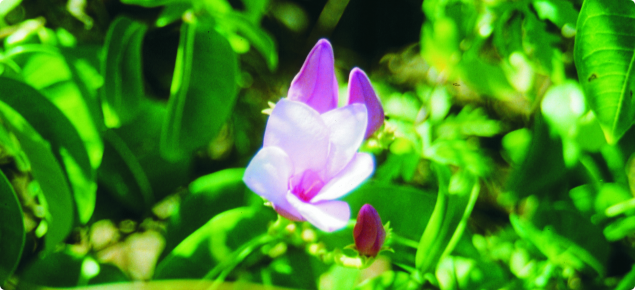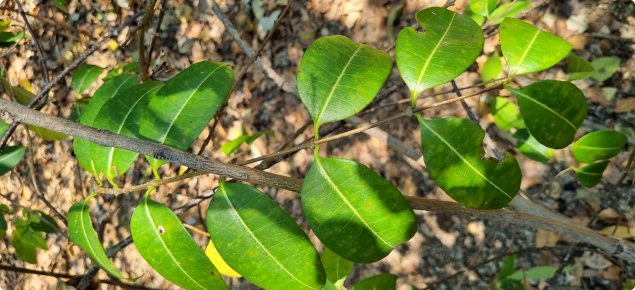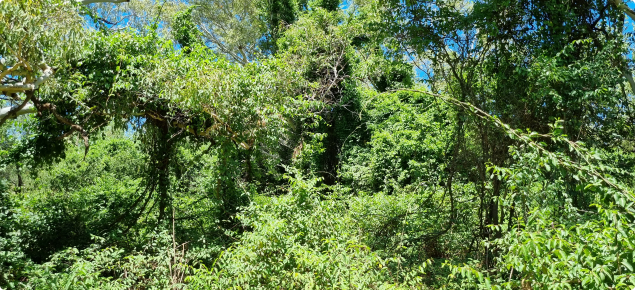Rubber vine (Cryptostegia grandiflora) is a member of the milkweed family, originated in Madagascar. Rubber vine may be found on a wide range of soils in the tropics. It is usually found in wooded areas or along watercourses where trees provide support for its vines and the good water supply allows vigorous growth. It is a Weed of National Significance (WoNS).
It was first recorded in Australia in 1875. It has since escaped from cultivation and become a weed. Most of the known infestations appear to have started from mining towns and other settlements. It is potentially a serious weed in the Kimberley of WA, where two infestations are known.
Appearance
Rubber vine is a woody climbing plant. Its rampant growth permits it to climb over trees sometimes up to 30 metres high. In the open it forms loose many-stemmed shrubs from 1 to 3 metres high.
Leaves: It has fleshy, shiny, dark green leaves ranging from 6 to 10 centimetres long and up to 5 centimetres wide. They are arranged in pairs opposite each other on long smooth succulent stems. When broken the stems exude a milky sap.
Flowers: Large, showy, white to lilac flowers with a broad funnel-shaped tube and five spreading lobes. The tubular portion is sometimes tinged with red. Flowers are about 3.5 to 10 centimetres in diameter.
Seeds: They form in large pods about 15 centimetres long. Pods are often found in pairs, joined at the bases to form an angled wing-like shape on a short stalk. The pods distinguish it from similar native plants. Each pod contains numerous seeds, each with a tuft of long white silky.
Agricultural and economic impact
An environmental weed that also invades rangelands. Toxic to livestock if eaten. Rubber vine is poisonous; it contains cardiac glucosides that interfere with heart operation. When eaten it also causes severe stomach and intestinal upset. Stock find it unpalatable but may eat it when feed is scarce and dry. Its rampant growth may restrict their access to water points. It damages the environment by smothering and pulling down riverside vegetation.
Modelling indicates that rubber vine would cost Western Australia $38.4 million each year if it is not managed and $10.9 million if it is managed (Cook, D. 2014. Agricultural Resource Risk Management. Strategic Report: Impact Assessments for Declared Plants in Western Australia. July 2014. Department of Agriculture and Food Western Australia).
Declared pest category
The Western Australian Organism List (WAOL) contains information on the area(s) in which this pest is declared and the control and keeping categories to which it has been assigned in Western Australia (WA). Search for rubber vine in the WAOL using the scientific name Cryptostegia grandiflora.
Requirements for land owners/occupiers and other persons
Requirements for land owners/occupiers and other persons if this pest is found can be sourced through the declared plant requirements link.
Search > detect > report
| MyPestGuide™ Reporter | Pest and Disease Information Service (PaDIS) |
Control method
Control methods for this declared plant can be found through the rubber vine control link.



